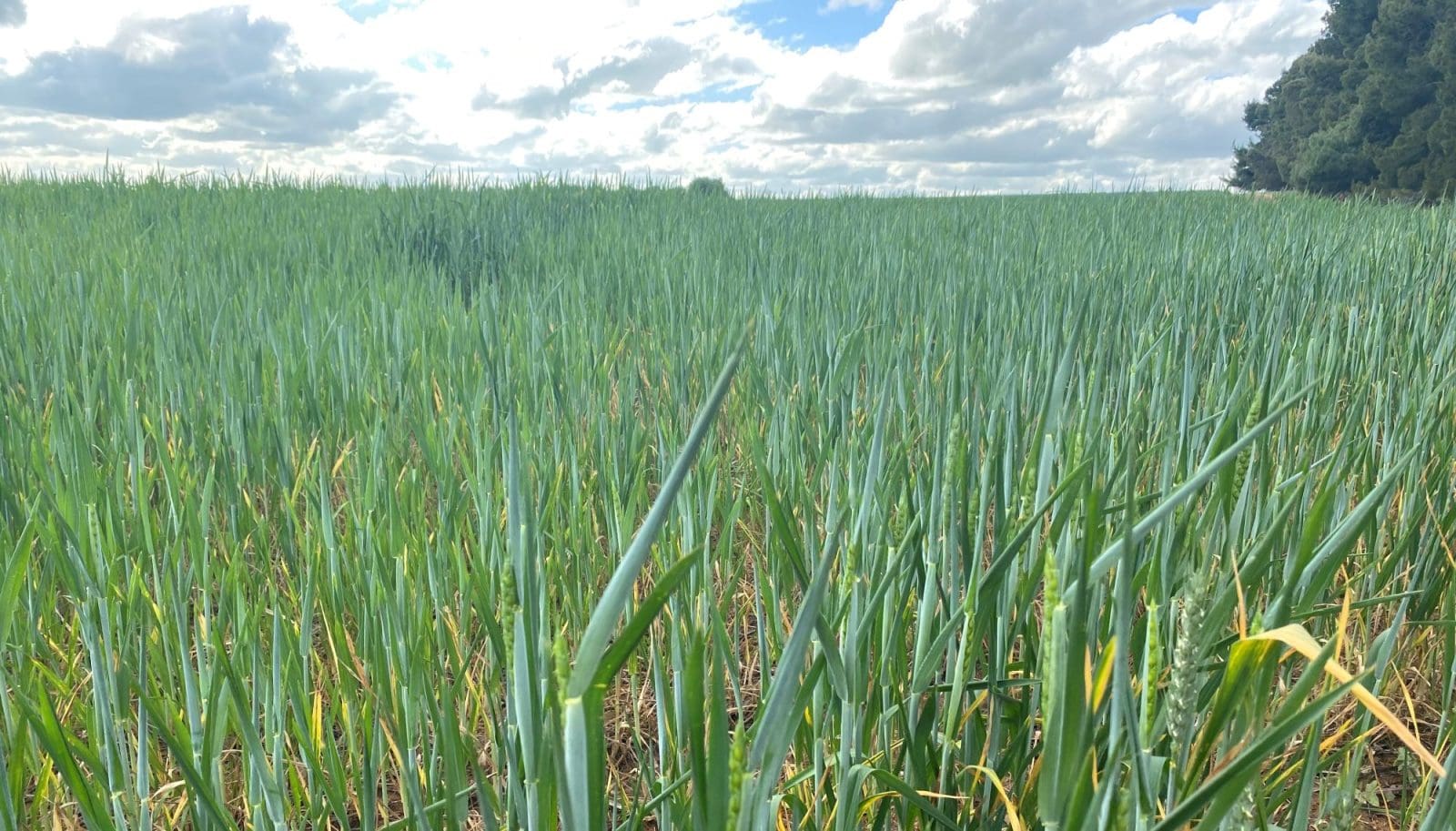
This crop of wheat at Brocklesby in southern NSW is unlikely to achieve an average yield as dry conditions bite.
A RUN of hot and dry weather is bringing home cereal, canola, and pulse crops in New South Wales at a rapid pace, with harvest in northern and central districts expected to start in coming weeks.
Average yields remain in sight for some crops in central NSW, and many south of the Lachlan River and east of the Newell Highway could achieve above-average yields or better, especially if they get another rain by mid-October.
However, crops on lighter country that cannot draw on subsoil reserves from last year’s sodden season are ripening well ahead of their normal schedule, and have below-average yield prospects.
Quality concerns come largely from a frost event in the second week of September which is thought to have done significant damage to pockets of the crop from north of Dubbo to the Riverina.
Average at best in Central West
At Parkes, PY Agronomy principal and senior agronomist Peter Yelland said crop growth has been modest throughout the season, and the shortage of urea evident during winter will not translate to a yield penalty.
“Yield potential has been limited with water rather than nitrogen,” Mr Yelland said.
“This hot, dry weather over the past four or five days has hurt a lot of crop, and we’re looking at an average yield being a good yield this year.”
While some inner-slopes crops could achieve above-average yields, Mr Yelland said canola yields would be average at best on the outer slopes and plains.
“We’re hoping for yields of 1.5 tonnes per hectare, but that improves quickly the further south and east you go.
“Wheat will average maybe 2.5t/ha; we normally work on wheat yields being double canola, and I don’t think it will be double this year.”
The Central West plants reasonable volumes of pulses, mainly faba beans, field peas, and lupins, and Mr Yelland said they have had a tough season.
“Pulses stopped flowering when it got hot, and they won’t improve.”
On the quality front, Mr Yelland said indications were that wheat would cope okay with the tough finish because nothing in the season encouraged plants to put out more tillers than they can fill.
“In our environment, crops haven’t really developed a large biomass so the shock from the heat is not going to be as significant as it would have if we’ve had a softer season.”
“Crops have regulated themselves.”
Quality is anyone’s guess.
“Barley’s a bit more of a concern than wheat around low test weights, and there could be an issue with this fast spring in canola.”
Mr Yelland said frost damage appeared to be minimal in crops he has inspected.
He is expecting the headers to be rolling by mid-October.
“That would be three to four weeks ahead of schedule.”
Mixed outlook from Wyalong south
The West Wyalong and Bland districts flooded last year, and crops in paddocks that were too wet to plant in 2022 generally have good yield prospects based on the subsoil moisture still beneath them.
At West Wyalong, Nutrien Ag Solutions agronomist Nick Hunt said crop conditions varied widely, with crops on heavy country generally in better condition than those on the region’s lighter red soils.
“The heat can still worry them, but they will handle it a lot better than country that didn’t flood last year,” Mr Hunt said.
“The red country holds less stored moisture, so it’s been relying on in-crop rain.”
The region experienced some frost earlier this month, and Mr Hunt said the varying stages of crop development should help to minimise the risk of widespread damage.
Delta Ag Coolamon agronomist Glenn Dyason said recent months have brought below-average rain to the outer slopes west of Junee.
“We have been living off subsoil moisture from last year and it’s hanging on reasonably well but this hot weather will test it,” Mr Dyason said.
“Barley looks excellent; it likes these conditions.
“Any canola that was sown early will be okay, but some late canola is struggling.”
“Wheat looks good, but it’s got a long way to go, and it needs another rain.
Some daytime temperatures above 30 degrees Celsius, with westerly winds to boot, have visibly stressed some crops.
Many crops with subsoil moisture beneath them, or sheltered from the wind, are on track to produce quality and quantity.
“South and east of Coolamon, crops could achieve above-average yields.”
“It will depend on how well weeds were controlled over summer, and how they went with rain.”
The grade outlook is harder to predict.
In light of the lack of in-crop rain recorded in general in recent weeks, Mr Dyason said the shortage of urea in July and August will not be a yield-limiting factor.
“In hindsight, it looks like we had plenty of urea, and in the end (the shortage) hasn’t cost us yield.”

HAVE YOUR SAY